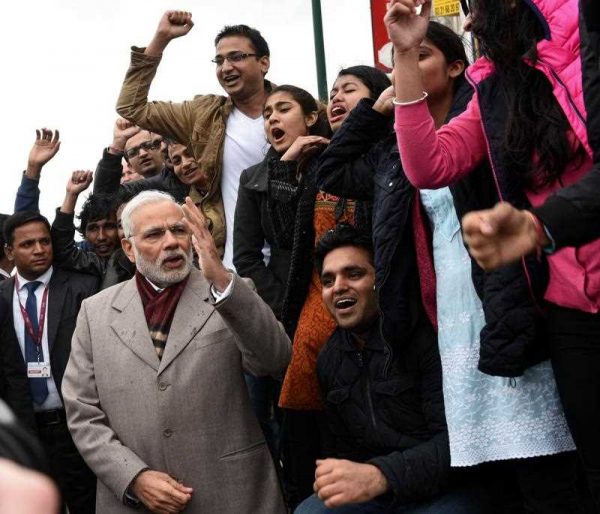India cannot aspire to be a global leader while it commands a mere 2 per cent share in global trade. This may rise to 3.5 per cent with the new policy’s target of raising total (that is to say, goods plus services) exports from US$465.9 billion in 2013–14 to US$900 billion by 2020–21. But even this will not suffice to give India the status of a major export power or a legitimate seat at the table of global governance. India will have to do even better than the annual export growth rate of 15 per cent envisaged by the Modi government’s policy.
An export growth rate of 15 per cent is a somewhat cautious target, which will not allow India to exploit the full potential of external demand for generating employment and expanding domestic manufacturing capacities.
The projected growth rate is significantly — and inexplicably — lower than the 21 per cent rate that was achieved by Indian exporters in the five years from 2005– 06 and 2010–11. Between 2003 and 2010 Chinese exports increased from US$438 billion to US$1,578 billion at a compound annual growth rate of more than 30 per cent. As a result, China’s exports were US$2.2 trillion in 2013 and accounted for 11.7 per cent of global exports — nearly five times India’s total exports.
But the policy does, to its credit, include some steps towards simplifying the system of rewards or incentives for exporters.
It introduces the Merchandise Exports from India and Service Exports from India schemes. These bring together a number of existing schemes under one heading. It also make rewards payable in the form of duty credit scrip, which are freely transferable, and can be used to pay for customs and excise duties, as well as service tax.
These incentives are also made available to entities operating from Special Economic Zones (SEZs). And manufacturing exporters who are also status holders can now self-certify their goods as originating from India. Exporters operating under four export promotion schemes will have access to fast track mechanisms from now on, and will be allowed to share infrastructure facilities and establish warehouses near their chosen ports.
But even though it was nine months in the making, the new policy leaves several well-known constraints unaddressed. SEZs continue to be subjected to the minimum alternate tax that was imposed on them in 2011. The merchandise export scheme comes with a non-eligibility list of 19 criteria; small- and medium-sized exporters will still be plagued by inspectors and miss out on good access to formal credit.
Nor has there been any special effort to attract export-oriented FDI and address infrastructure weaknesses, which are recognised to be two essential conditions for allowing Indian exporters to join global value chains. In some areas, the details are lacking as well. The policy does not give a firm date for setting up the Directorate General of Trade Remedies. It also does not give any details of the proposed Centre for Research in International Trade, which will hopefully be merged with the ministry’s own Indian Institute of Foreign Trade.
It might have been advisable to wait another three months before announcing the policy during which these details would have been worked out and action completed on reducing cost and time in processing export and import applications.
Strategically, there are three major omissions. First is the absence of a policy to ramp up foreign tourism, an area in which India is truly a poor performer. With its meagre 7.5 million foreign tourist arrivals per year, India is losing out on a major employment expansion opportunity.
The second area of neglect is the small and medium business sector — responsible for 45 per cent of manufacturing output and 40 per cent of total exports — which receives only cursory treatment without any tangible steps to integrate firms into global value chains or improve access to needed technologies and markets.
Third, the policy leaves a panoply of export promotion and facilitation institutions virtually untouched, despite the majority of them not contributing effectively to the export effort.
The argument that tourism, manufacturing or small and medium businesses come under different ministries and consequently cannot be covered under the trade policy is contrary to the policy’s own assertion that the document represents the effort of the ‘whole government’ and tries to mainstream export activity. It would have been far better if the policy had been accompanied by policy announcements for export expansion by other ministries.
Such a coordinated exercise would have shown a government working towards a common goal and inspired greater confidence. As it is, the government has reinforced the impression that it is happy to tinker at the margins rather than go back to the drawing board to design a bold new policy approach.
Such incrementalism could disillusion investors who expected a new policy paradigm from the Modi government for tackling India’s serious employment challenge.
Rajiv Kumar is a senior fellow at the Centre for Policy Research, India.
This article was first published here on Times of India.

